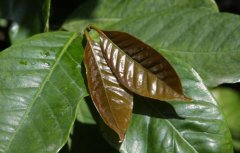Coffee bean African coffee producer Rwanda
The history of coffee in Rwanda is one of the most interesting coffee producers in East Africa. Rwanda, known as the Land of Thousand Lakes, grows coffee between 1700 and 2000 meters above sea level. The quality of Rwandan coffee can be said to be world-class, with a clean and bright taste, comparable to the best Central American Blue Mountain coffee, with extremely obvious sweetness and floral aroma, and is more loved by professionals.
According to relevant data, Rwandan coffee was introduced into Rwanda by German missionaries in 1904. Around 1930, Rwandan coffee became a cash crop for local farmers.
Rwandan coffee is grown in many parts of the country, most of which come from the southern and western regions of Rwanda. Many local farms are between 1700 and 2000 meters above sea level. Coffee is grown mainly in the south near Butare, while in the north, the area of coffee cultivation is relatively limited, most of which are concentrated in the capital Kigali, mainly growing in the mountains of about 1300 meters. The quality is average and the yield is low.
Rwanda's economy and production are lagging behind, and coffee production has played a considerable role in Rwanda's economic development, as it is one of the few cash crops. The Rwandan government supports local farmers to plant and produce coffee on a large scale, but there are no strict requirements and guidance on the quality of coffee beans, so the local coffee processing method is relatively rough.
Rwanda is one of the Arabica species producing areas in Africa, with 500000 small farms with an average acreage of less than 1 hectare. The planting area of coffee is less than 1 hectare, with an average of 165 trees per farmer, which is very small compared with that of farmers in other countries.

Important Notice :
前街咖啡 FrontStreet Coffee has moved to new addredd:
FrontStreet Coffee Address: 315,Donghua East Road,GuangZhou
Tel:020 38364473
- Prev

Coffee Encyclopedia SCAA Ancient Coffee Variety types Taste introduction and differentiation
Coffee has more than a hundred varieties of coffee, the more common coffee are: Arabica, outstanding personality, unique flavor, is the main force of boutique coffee, mainly used in coffee shop management and high-end coffee market supply; Robusta, rough flavor, high caffeine content, not a boutique coffee, often used
- Next

Coffee knowledge introduction to Brazilian coffee
Today, Brazil is the world's largest coffee producer. About 25% of the world's coffee comes from Brazil, which affects the development of the world coffee industry. Brazilian coffee is mainly grown in Parana, Santos Jing, Sao Paulo, Minas Gerais and Bahia. Most of the farms in these areas are less than ten hectares. According to the 2000 record, 71% of the farms in Minas Gerais are less than
Related
- Beginners will see the "Coffee pull flower" guide!
- What is the difference between ice blog purified milk and ordinary milk coffee?
- Why is the Philippines the largest producer of crops in Liberia?
- For coffee extraction, should the fine powder be retained?
- How does extracted espresso fill pressed powder? How much strength does it take to press the powder?
- How to make jasmine cold extract coffee? Is the jasmine + latte good?
- Will this little toy really make the coffee taste better? How does Lily Drip affect coffee extraction?
- Will the action of slapping the filter cup also affect coffee extraction?
- What's the difference between powder-to-water ratio and powder-to-liquid ratio?
- What is the Ethiopian local species? What does it have to do with Heirloom native species?

